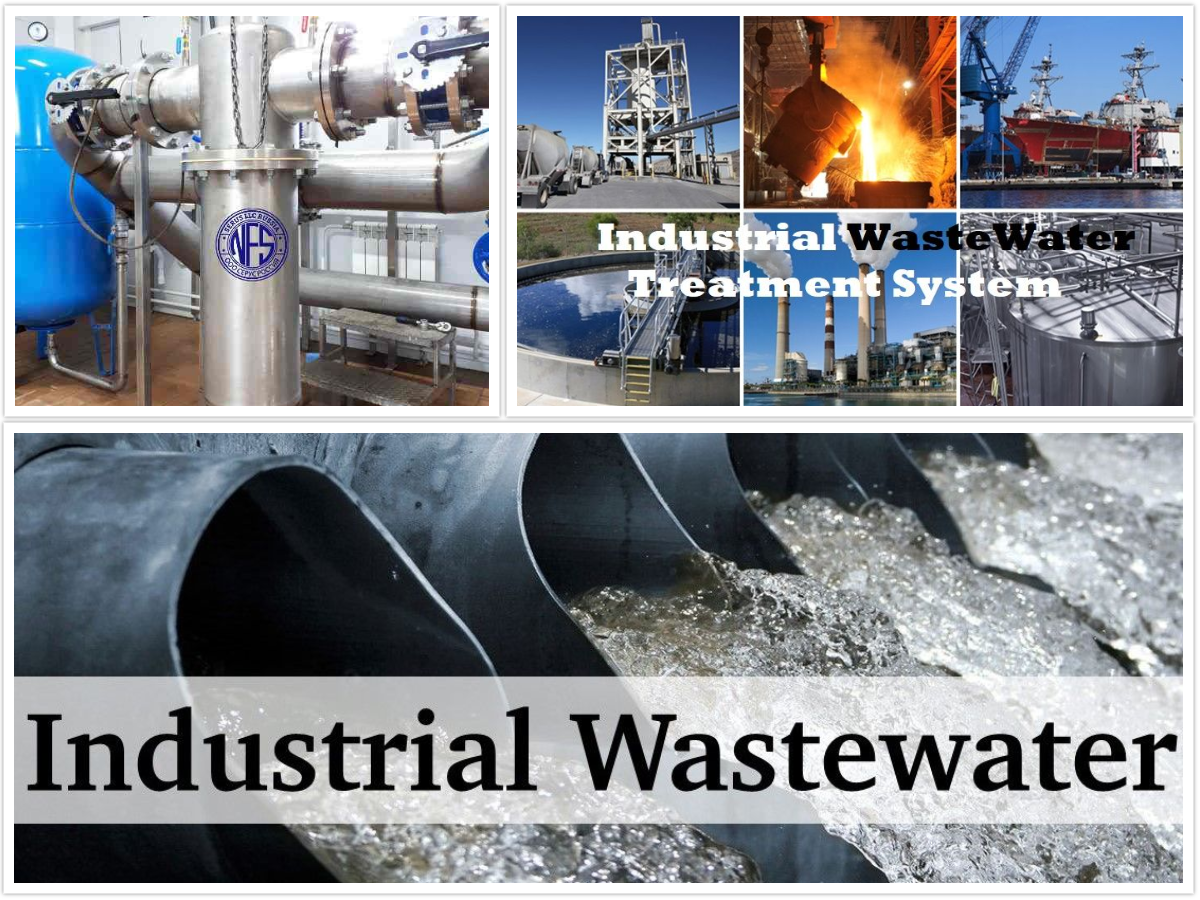Secret Methods in Hazardous Waste Water Therapy Procedures
The therapy of commercial wastewater is a vital facet of ecological monitoring, including an array of techniques designed to mitigate the influence of impurities. Advancements in technologies such as membrane filtration and advanced oxidation procedures supply ingenious solutions for enhancing treatment efficacy.
Physical Therapy Techniques
Just how properly can physical therapy methods resolve the intricacies of commercial wastewater? Physical therapy methods play a crucial duty in the initial stages of wastewater management, focusing mainly on the removal of solids and large particulates. Techniques such as sedimentation, purification, and flotation are essential for minimizing the concentration of put on hold solids, thus improving the performance of succeeding treatment processes.
Sedimentation includes the gravitational settling of solids, allowing for the separation of much heavier products from the wastewater. This technique is specifically efficient in making clear water prior to chemical or organic treatments.
In addition, flotation protection methods, which make use of air bubbles to lift put on hold solids to the surface area for removal, are effective in dealing with wastewater with high focus of fats, oils, and greases. Generally, physical therapy techniques act as an essential primary step in the comprehensive management of commercial wastewater, ensuring that the load on succeeding therapy phases is reduced and improving general treatment efficiency.
Chemical Treatment Strategies
While physical treatment techniques prepared for efficient wastewater management, chemical therapy strategies are essential for addressing the more complex pollutants frequently discovered in industrial effluents. These methods make use of various chemical representatives to speed up, reduce the effects of, or oxidize hazardous substances, making sure a much more thorough elimination of pollutants.
One typical approach is coagulation and flocculation, where chemical coagulants such as light weight aluminum sulfate or ferric chloride are contributed to advertise the aggregation of suspended particles. This procedure boosts solid-liquid splitting up, reducing turbidity and boosting water high quality. Additionally, neutralization procedures are used to change the pH of wastewater, using bases or acids to neutralize acidic or alkaline streams, specifically.
Oxidation-reduction responses play a critical function in degrading natural impurities and virus. Chemical oxidants like hydrogen, chlorine, or ozone peroxide are utilized to break down complex organic substances, making them less hazardous or a lot more naturally degradable. Moreover, progressed oxidation procedures (AOPs) incorporate multiple oxidation techniques to enhance contaminant elimination effectiveness.
Organic Treatment Procedures
The efficiency of wastewater treatment is dramatically boosted by biological treatment processes, which harness the natural metabolic tasks of microorganisms to decompose raw material and eliminate pollutants. Industrial Waste Water Treatment. These processes largely involve cardiovascular and anaerobic digestion, each tailored for certain kinds of wastewater
Cardiovascular therapy processes utilize oxygen to sustain microbial development, promoting the breakdown of organic toxins right into carbon dioxide and water. Typical approaches include turned on sludge systems, where aeration containers help with the mixing of wastewater with microorganisms, and flowing filters, which urge biofilm development on media surface areas.
Alternatively, anaerobic treatment processes take place in the lack of oxygen, making use of anaerobic microorganisms to break down raw material, leading to biogas manufacturing, a sustainable power resource. Anaerobic digesters are usually employed in industrial setups for this objective, properly reducing the quantity of sludge while producing important biogas.
The choice of a biological treatment method depends on wastewater qualities, therapy goals, and regulative criteria. The integration of organic processes in wastewater therapy not only boosts contaminant removal efficiency yet also advertises sustainability by decreasing chemical use and sustaining source recuperation.
Advanced Oxidation Processes

Common AOP methods include Fenton's ozonation, reagent, and photocatalysis. Fenton's their explanation reagent, a mix of hydrogen peroxide and ferrous iron, militarizes the formation of hydroxyl radicals, making it reliable for dealing with wastewater having phenolic substances and other recalcitrant compounds. Ozonation makes use of ozone as an effective oxidant, efficient in weakening a vast array of organic pollutants while simultaneously decontaminating the effluent. Photocatalysis uses light-activated catalysts, such as titanium dioxide, to improve oxidation reactions and get rid of impurities.
AOPs use several benefits, including lowered sludge manufacturing and the capability to treat wastewater with high focus of natural pollutants. The execution of AOPs needs careful consideration of functional parameters and cost-effectiveness, making sure that these advanced techniques are suitably incorporated into existing wastewater therapy systems.
Membrane Filtering Technologies

Microfiltration is effective for removing suspended solids and bacteria, while ultrafiltration targets smaller sized natural molecules and infections. Nanofiltration links the void in between ultrafiltration and turn around osmosis, effectively getting rid of divalent ions and natural compounds. Reverse osmosis provides the highest level of filtration, made use of primarily for desalination and eliminating mono-valent ions.
Membrane layer modern technologies offer countless advantages, including low energy consumption compared to standard treatment methods, modular layout for scalability, and the possibility for water recovery and reuse. Nevertheless, challenges such as membrane fouling and the demand for routine upkeep have to be a knockout post dealt with to make sure system efficiency. On the whole, membrane filtration innovations represent a crucial component of modern commercial wastewater therapy methods, promoting sustainability and source preservation in water administration.
Final Thought
In final thought, commercial wastewater therapy employs a varied variety of methods, including physical, chemical, organic, and advanced approaches. Continued advancements in these methodologies will certainly further boost the effectiveness and efficiency of wastewater therapy procedures in industrial setups.
The therapy of industrial wastewater is a critical element of environmental administration, involving a variety of techniques designed to minimize the influence of impurities.Exactly how efficiently can physical therapy techniques resolve the complexities of industrial wastewater?Advanced oxidation processes (AOPs) represent an innovative method in industrial wastewater treatment, designed to effectively degrade organic toxins that are often resistant to conventional therapy methods (Industrial Waste Water Treatment).In conclusion, commercial wastewater therapy uses a varied range of see techniques, including physical, chemical, biological, and progressed methods. Proceeded improvements in these methods will further improve the effectiveness and effectiveness of wastewater therapy procedures in commercial settings